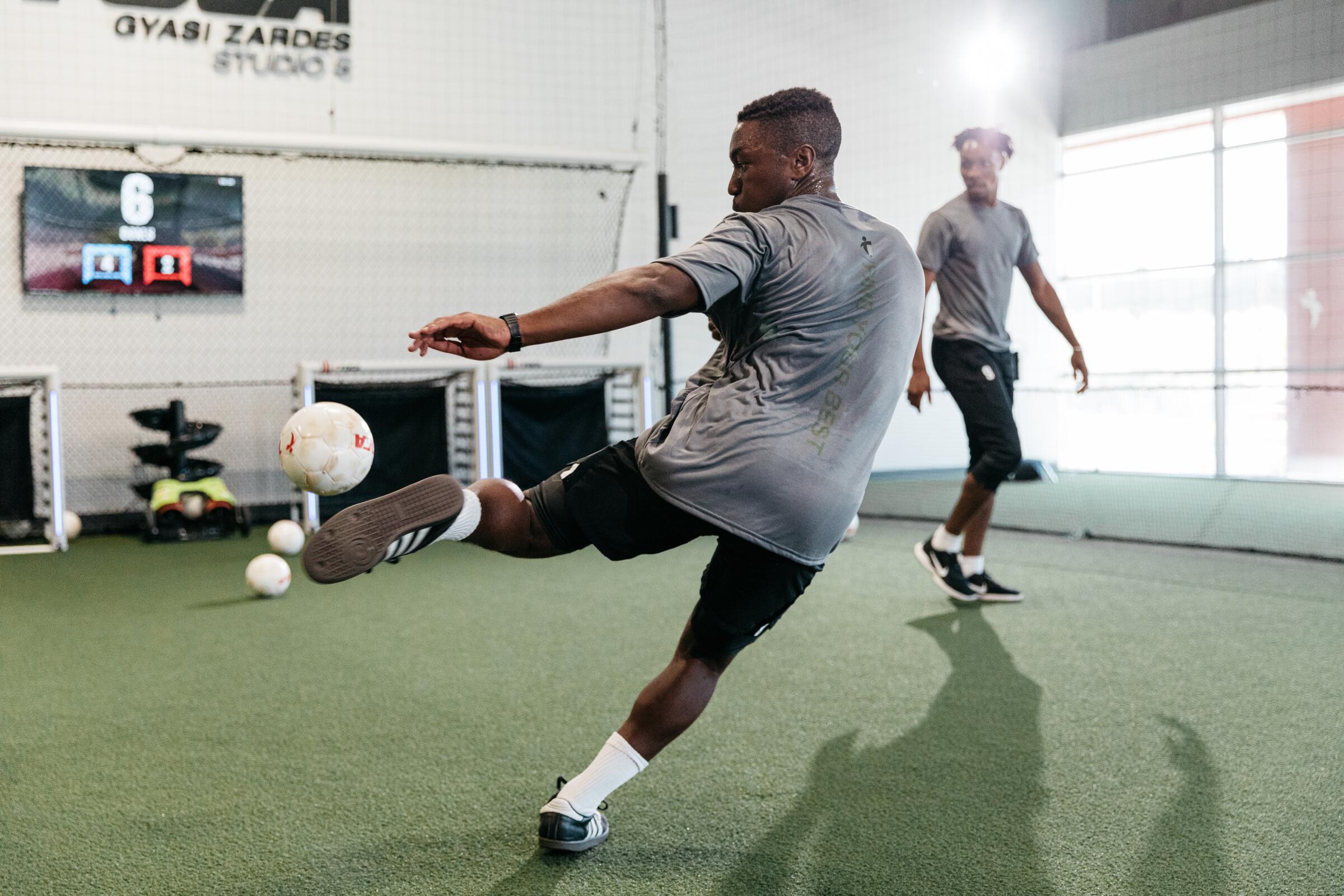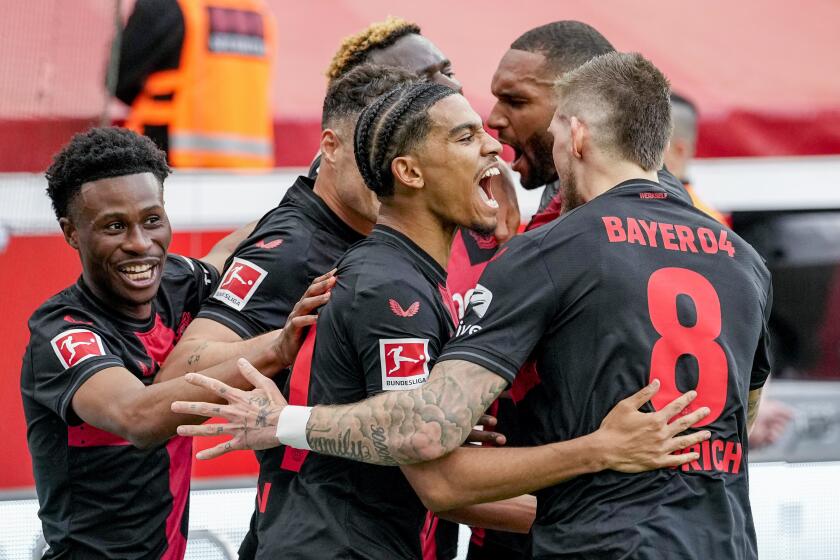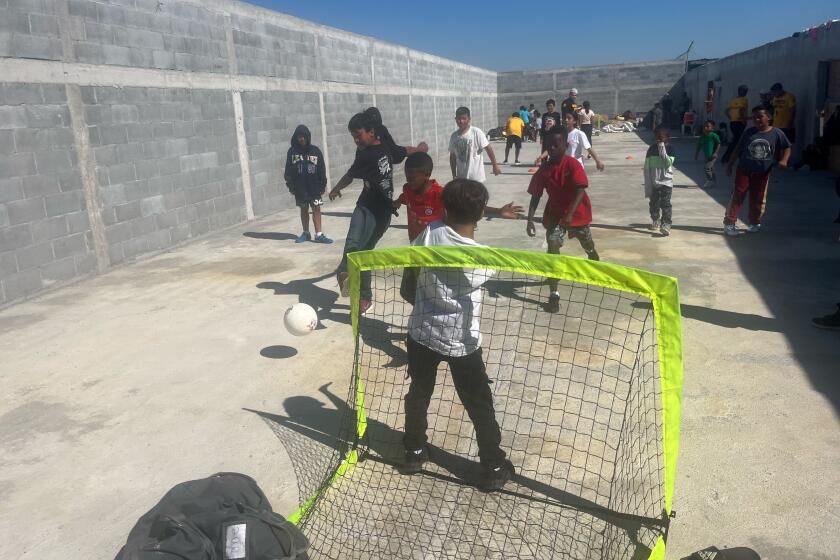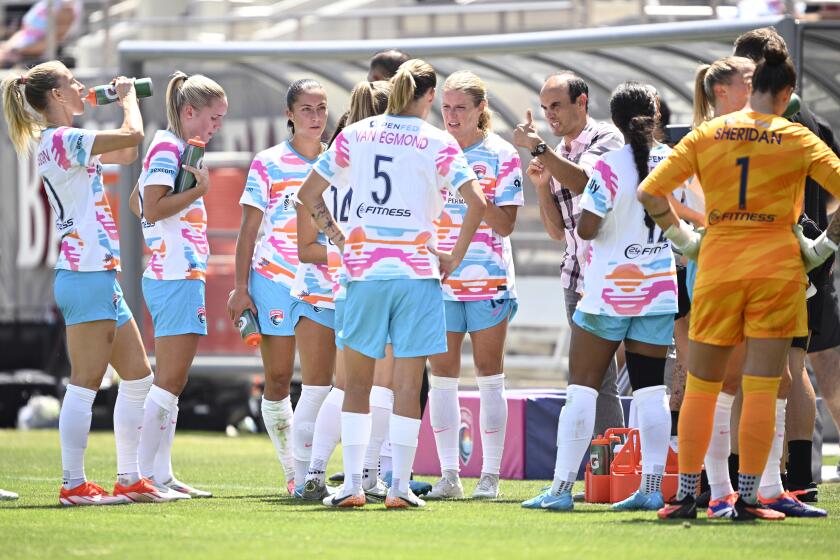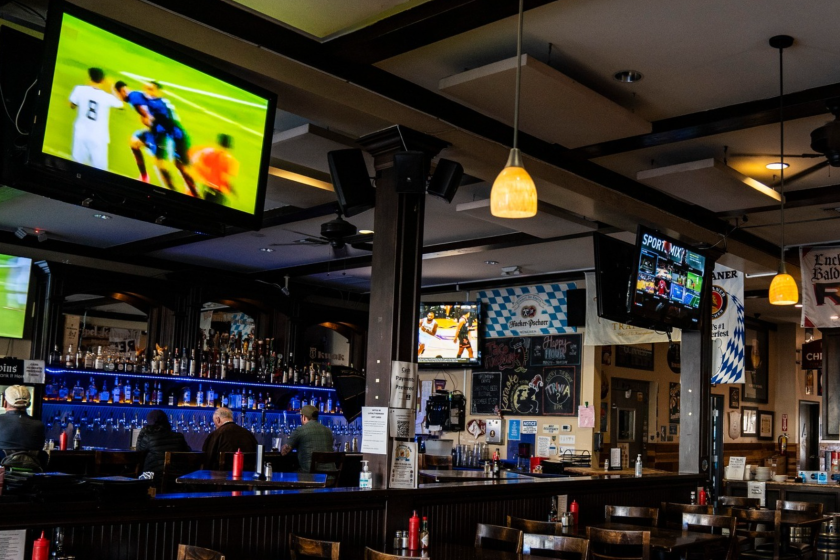Kevin Baxter writes about soccer and hockey for the Los Angeles Times. He has covered seven World Cups, four Olympic Games, six World Series and a Super Bowl and has contributed to three Pulitzer Prize-winning series at The Times and Miami Herald. An essay he wrote in fifth grade was voted best in the class. He has a cool dog.
1
Eddie Lewis played his final soccer game at the age of 36, old for a midfielder but young for just about everybody else. So with more than half a lifetime ahead of him, he had plenty of time to build a new career.
Yet like many former players, all he really knew was soccer.
“A lot of players retire with quite a bit of soccer experience. It almost becomes somewhat of a detriment in the sense that they haven’t gained a lot of other experiences along the way,” he said.
Lewis had a lot of soccer experience, having played 399 professional games in a 14-year club career spent mainly in England while making 82 appearances and playing in two World Cups with the national team. However, none of that was going to help land a job that required him to wear long pants to work.
He was offered a coaching job with Real Salt Lake and a front office position with his final team, the Galaxy, he said. But Lewis had another idea, one that would allow him to take his soccer knowledge into the business world. So in 2016 he started TOCA Football, a technology-based training platform that now has warehouse-size facilities in 39 cities in 15 states and has become the largest operator of indoor soccer centers in North America. The company also operates TOCA Social, a soccer and dining experience in the United Kingdom.
Bayer Leverkusen ended Bayern Munich’s long reign as Bundesliga champion, but is its season merely a fluke or a sign of growing parity in European soccer?
“I was very passionate about this concept, which is really all it was at the time, and felt strongly that I needed to go all in and really make it happen,” Lewis said.
The concept is built around a training method Lewis stumbled upon while at UCLA. The team’s locker room was inside Pauley Pavilion, so the soccer players would often stop and watch basketball practice on their way to the showers. One day coach Jim Harrick rolled out a hoop that was smaller than regulation size for shooting drills, reasoning that if his players could score in the narrow basket, playing with the bigger one would be easy.
“I thought, ‘OK, that makes sense,’ ” Lewis remembered.
So he took a tennis ball to a nearby parking garage and practiced dribbling, passing and shooting.
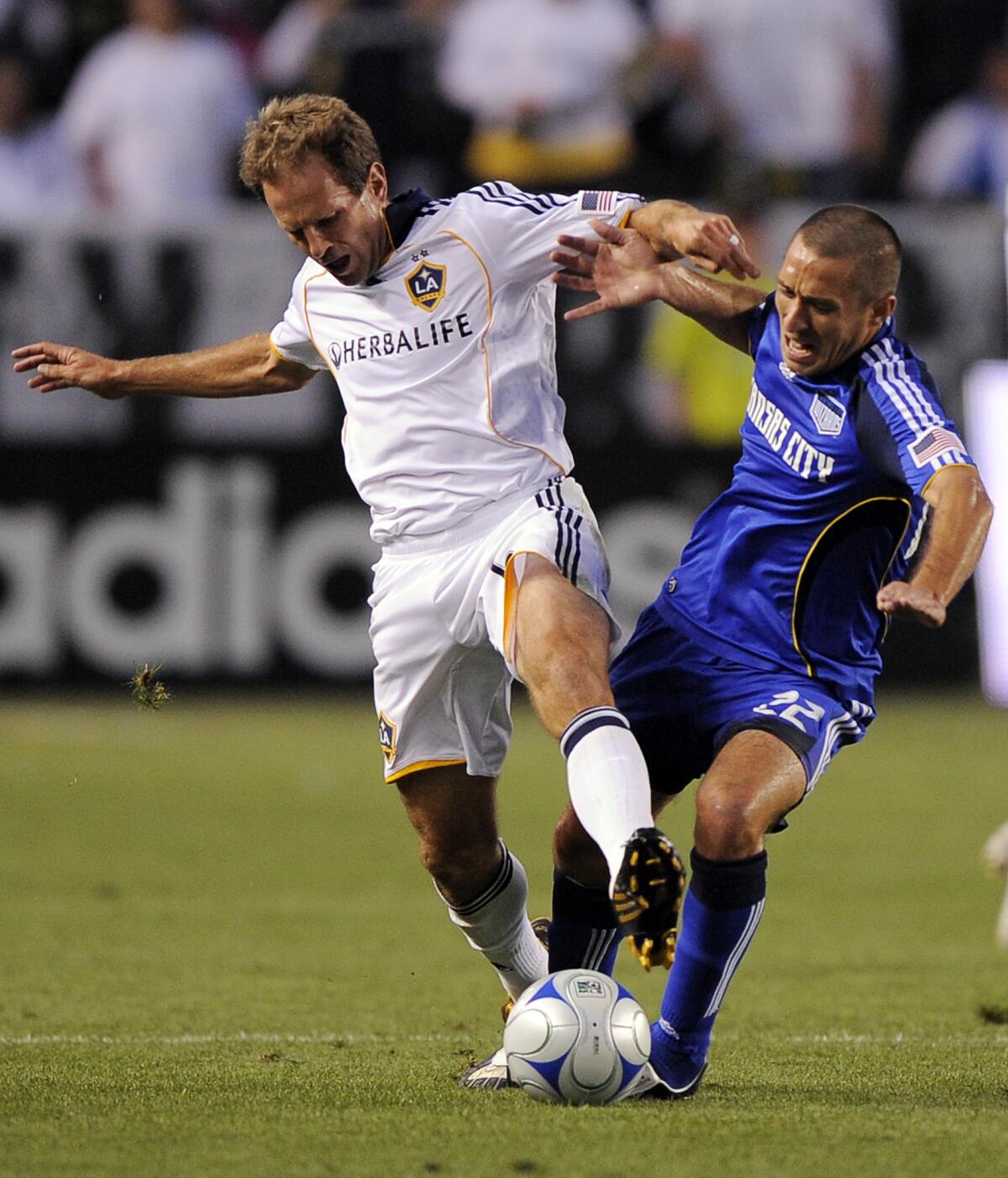
Galaxy midfielder Eddie Lewis, left, battles Kansas City’s Davy Arnaud for the ball during a match in May 2009.
(Mark J. Terrill / Associated Press)
“I started to notice improvement,” he said. “Because not only was I trying to control this very small ball, I was also starting to work on some of the areas that I wouldn’t typically work on in training.”
Lewis quickly expanded on the idea, buying a portable tennis ball launcher and taking as many as 1,000 touches a day, playing balls at various speeds and angles and replicating what he might see in a game. The workouts, he said, helped him improve from an average player to a two-time World Cup starter.
“Without a doubt I wouldn’t have made it to the MLS [without it],” Lewis said. “I attribute all that success to this kind of training methodology.”
The methods were so unconventional he hid them from his teammates, practicing alone in industrial parks after the offices and warehouses had closed for the day.
“I was a little embarrassed. But it was also a competitive edge for me, so I kept it quiet,” he said.
Which doesn’t mean it didn’t leak out. Jimmy Conrad, a teammate for one season in San Jose, surprised Lewis during a practice on a tennis court and was so impressed, Lewis said, he bought a tennis ball machine of his own. He would later play alongside Lewis in the 2006 World Cup.
That was further proof the concept could work for anyone. So after retiring, Lewis went to work refining the idea and making it soccer specific. The result is TOCA (Spanish for “touch”).
In a TOCA training session, balls slightly smaller than regulation size are fired out of a ball launcher Lewis designed. The speed, height and angle of each ball can be altered to mimic low passes or high crosses with players getting an average of 300 touches in an hour-long training session, taking the ball on the move or in a stationary position before shooting at a small target that lights up if the pass is successful.
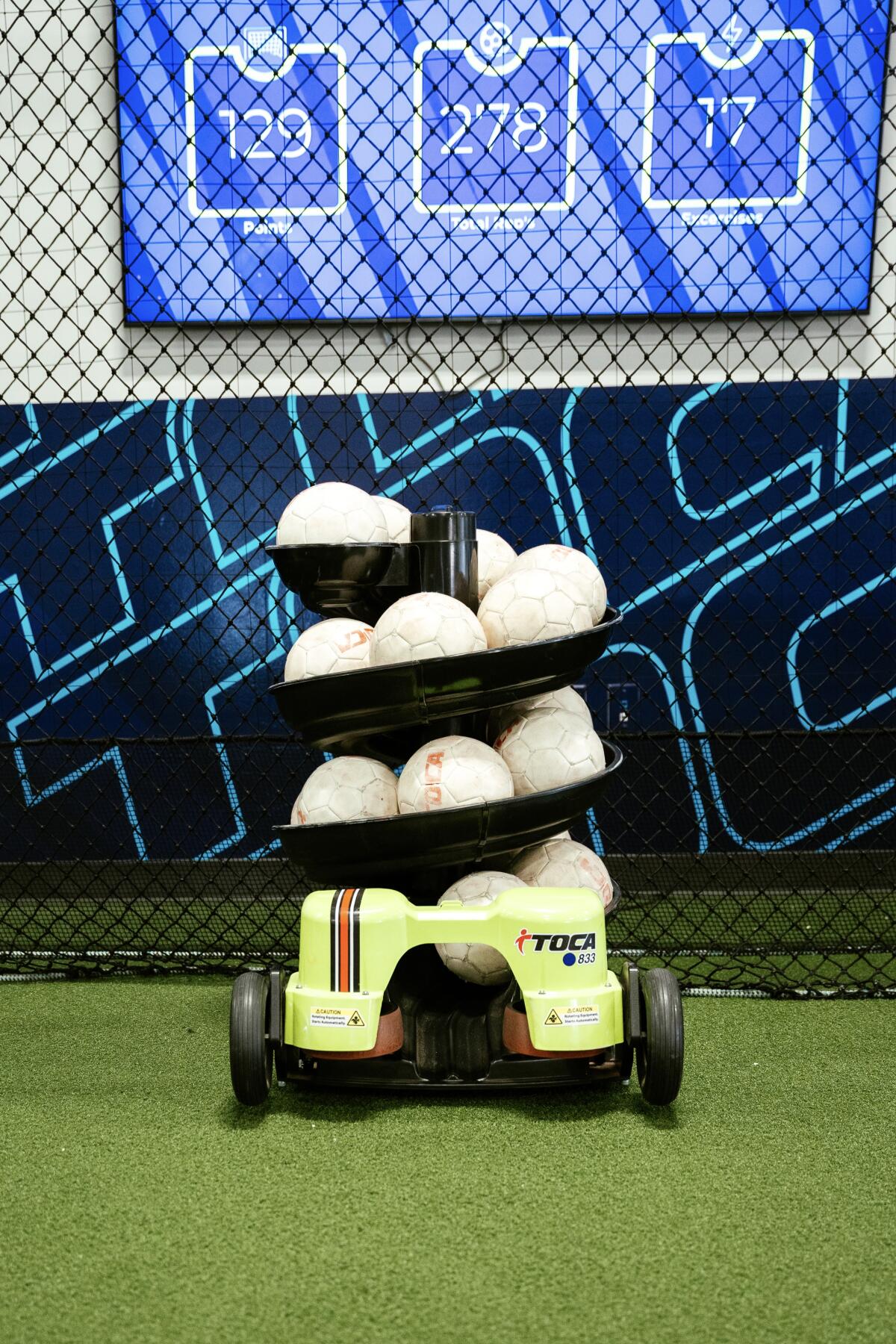
(TOCA Football)
The aim is to improve the technical, physical and cognitive abilities of players through proprietary training systems using meaningful repetitions. A large flat-screen TV keeps track of several metrics in real time, allowing players to track their progress.
“Training at TOCA allows us to get in so many touches on the ball. It also really focuses on quick thinking and developing better awareness,” said Angel City defender Gisele Thompson, who recently trained at the company’s Costa Mesa headquarters with her sister and teammate Alyssa. “A good first touch and knowing what’s around you are such core skills in soccer, and TOCA has helped us really develop those.”
Both Thompsons are TOCA ambassadors and the Galaxy are also believers. Gordon Kljestan, who also played professionally before joining the MLS team’s front office 13 years ago, has followed TOCA from its early days of trial and error to its place on the cutting edge of innovative soccer training.
“It’s really good for young players because it takes so much more technique to keep the ball coming in when it’s a smaller ball,” he said. “You can play the targets. It can teach you to turn, play different angles. It’s cool.”
So cool the Galaxy have ordered two of TOCA’s ball launchers for use at their training center.
“Anything that gets more repetition and touches on the ball — I don’t care if it’s playing against a wall or using a TOCA machine — to just keep getting reps is the most important thing,” Kljestan said. “But TOCA is special and it adds a little bit more uniqueness in terms of trying to do different angles or different spins or different variations.”
Although TOCA draws some Division I college players and professionals, such as the Thompson sisters, to its training centers, the largest demographic is players between the ages of 8 and 12.
An L.A.-based nonprofit with support from Angel City FC is using soccer to help children stranded on the U.S.-Mexico border cope with waiting for asylum.
“Within this center alone I think there’s about 4,000 kids doing TOCA training,” Lewis said of the Costa Mesa site.
Lewis started TOCA with his own money, but the company has grown so fast — it now has 1,100 employees in the U.S. and the U.K. — it raised more than $100 million from half a dozen investors, including WestRiver Group; Jared Smith, co-founder of Qualtrics, a Utah cloud computing company; and Harry Kane, captain of the English national team. Its nine-member board includes World Cup champion Abby Wambach.
Lewis expects that growth to continue.
“We’re setting our sights on between 200 and 300 centers across the U.S.,” he said.
Looks like his second career is going to work out just fine.
⚽ You have read the latest installment of On Soccer with Kevin Baxter. The weekly column takes you behind the scenes and shines a spotlight on unique stories. Listen to Baxter on this week’s episode of the “Corner of the Galaxy” podcast.
